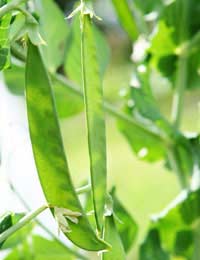
If you’re new to vegetable growing, it can be a daunting prospect. There are so many seed catalogues and vegetable varieties, and they’re all promising high yield and superb results. So which are the very best, easiest veg to begin with? We’ll spill the beans…
The Best Tasting, Easiest Veg for Beginners to Grow…
If it’s your first year growing vegetables, you’ll naturally want to grow the finest tasting crops. Ask a seasoned allotmenteer and they’ll tell you that some vegetables aren’t really worth growing on a small scale, when you compare the cost and taste to what you can buy at a grocer’s.
Sweetcorn, for instance, is a crop that can be very hit-and-miss. The British summer simply isn’t reliable enough to guarantee that your corn cobs will ripen up to maturity before autumn – so, although it’s one of our tastiest vegetables, sweetcorn doesn’t make our best crop list. Sweet potatoes (despite the hype) can also be extremely disappointing – producing a low yield and unreliable quality. Want to know what DOES make the grade?
Overwintering Peas – Peas can be attacked by pea moth or mice; they will need staking and they must be harvested all at once, at their peak. But for every disadvantage, there’s an equally compelling advantage.
For example, peas are a very cheap crop. A typical packet of pea seed will contain enough seeds to sow a 24’ row. You can avoid pea moth by choosing the round-seeded, overwintering peas: sow them in November (soaking beforehand in paraffin if you expect mice to visit), then mulch generously and scatter forked twigs all over the bed to deter birds. You needn’t pay them any more attention until spring, when you should weed and stick the twigs upright to provide a little support. The results will repay your efforts: pea crops are generous and delicious. Leave a few pods on the plants to dry out, giving you free seed for next year!
Broad Beans – If you’re a fan of broad beans, make space for them in your beginners’ vegetable garden: they require no aftercare, produce plenty, and freeze beautifully. Broad beans grow to about 1.5m and don’t need any support. You can sow them in November, saving you an extra job in the spring; and if you mulch as you sow, weeding will be minimal.
It’s a good idea to follow the autumn sowing with a spring sowing, giving you a long cropping period. When the pods are ready, the first broad beans are small and tender enough to eat whole (or even raw – give them a try!). You can even eat the small shoots from the tops of the plants on salad. And don’t forget to shell and store plenty in your freezer.
Saladini – You’ll need to give this crop a slug-free bed, using Nematodes if necessary – but after that you’ll be rewarded with a huge supply of restaurant-standard salad leaves over a long season. From just one packet of seed, you’ll be eating bagfuls of mixed salad that usually costs a lot at the supermarket.
Sow saladini (a mixture of cut-and-come-again leaves) at two week intervals to make sure you can keep picking it. It’s one of the easiest veg to maintain, requiring just a little weeding. You’ll be surprised at the speed and variety of the seedlings. If you love summer salad, this crop’s a must.
New Potatoes – If you’ve never tried freshly-dug potatoes, you’re in for a real treat. Baby new potatoes at the start of the season (early summer) are fresher, softer and sweeter than anything you can buy in posh bags from the supermarket.
It’s not just a grower’s myth – potatoes are at their very finest within half an hour of digging. So make a little space for this crop, which is incidentally also easy AND cheap! A net of 20 tubers (‘first earlies’ will usually crop in May) will cost you as little as £4. Plant them in late February, earth up once in late March, and your efforts will reward you with soft, almost skinless potatoes – you’ll be fighting for the last forkful.
